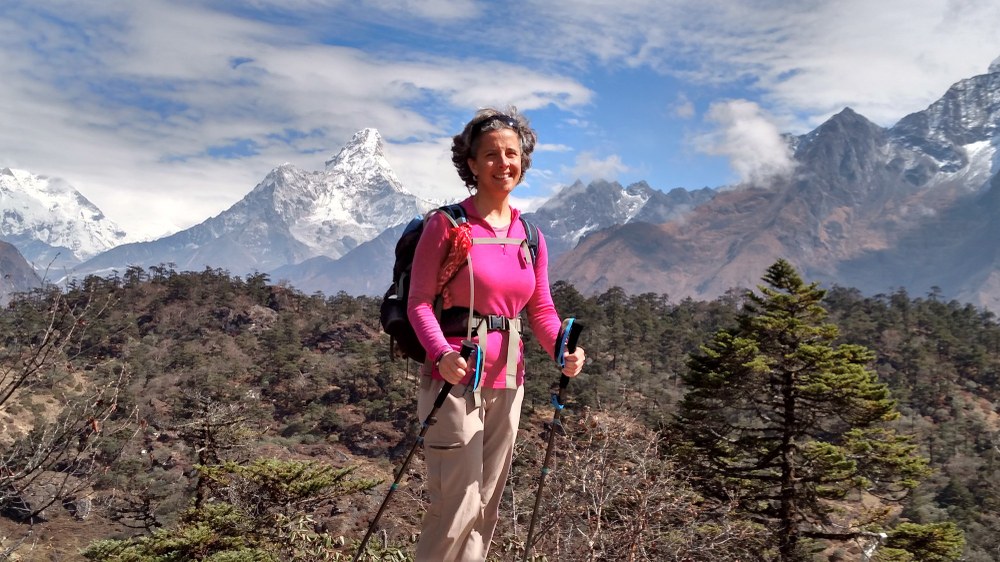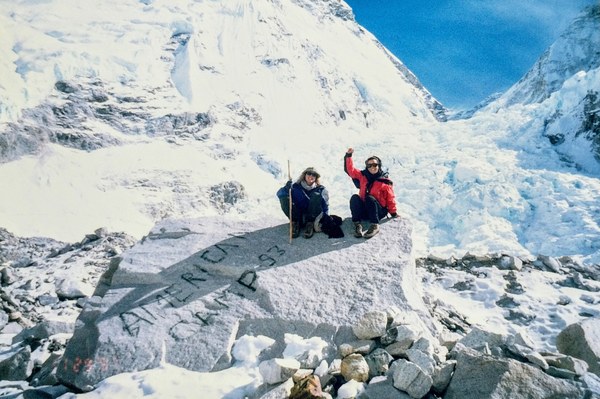
Trekking through Nepal’s villages for the first time many years ago, I felt like I was dropped into the pages of a National Geographic magazine. Everything was new to me.
Vibrant saris flowed as women walked, balancing cisterns on their heads. The bright green, terraced rice fields were ripe for harvest, and the snow-capped Himalaya pierced the sky. Sounds were everywhere, with chimes of temple bells and monks chanting. The warm, humid, earthy air alternated between the scent of sweet incense and burning cow dung.
Those were my first days on the trail, days that would turn into a year of slowly traveling through Nepal, northern India, and Thailand. I took my time to enjoy the experience, moving by foot, by bike, and even by camel. I became wholly immersed in the activity of movement. I felt like an explorer. I felt accomplished as I stepped out of my comfort zone and leaned into wonder, discovery, and excitement of the unknown.
In the early days of adventure travel, “extreme” or “high-adrenaline activities” – such as mountaineering, white water rafting, and skydiving – were pursued by a small group of hardcore enthusiasts. At the time, adventure travel was considered a small, niche market. Those adventure travelers sought destinations and activities outside the typical tourist experience that required higher physical fitness and mental endurance.
The perception of adventure travel has shifted.
The Adventure Travel Trade Association (ATTA), the largest global network of adventure travel leaders, surveyed travelers in 2005 and 2015. They found that the words used to describe adventure travel differed significantly. In 2005, terms like hardcore, risk, power, extreme, physical exertion, and danger were top of mind. Ten years later, respondents hardly mentioned risk, with the focus shifting to learning, meaningful experiences, and being in a natural environment.
As adventure travel has become more mainstream, the activities have broadened to include a range of experiences, such as cultural immersion, wellness, culinary skills, wildlife safaris, and nature walks. More people seek physically and mentally challenging experiences. And what people find challenging is unique to them.
Today, a more encompassing definition of adventure travel is that it provides novel mental, emotional, and physical experiences to the traveler, highlights the natural environment, and provides challenges that promote physical health and fun.
 Maureen and a friend at Everest Basecamp in 1997.
Maureen and a friend at Everest Basecamp in 1997.
While I still seek physically active endeavors in nature and enjoy exploring places off the beaten path, the human connections I forged during the trip ultimately stay with me the most. Interacting with the local people creates the most impactful experiences and strongest memories, whether it’s a spontaneous cup of tea with shepherds in Jordan or a planned homestay in Croatia. I highly recommend engaging with the local culture through art, music, cooking classes, homestays, or simply conversation. It will enhance your trip more profoundly than any of the spectacular views you see along the way.
Global Adventures is The Mountaineers adventure travel program and currently offers a wide range of domestic and international activities suitable for all types of adventure-seekers, such as trekking, backpacking, day hiking, and cross-country skiing. There is no limit – any type of adventure can become a Global Adventure. What are your perceptions of adventure travel, and where in the world would you like to go?
This article originally appeared in our summer 2023 issue of Mountaineer magazine. To view the original article in magazine form and read more stories from our publication, visit our magazine archive.
 Maureen Seeley
Maureen Seeley